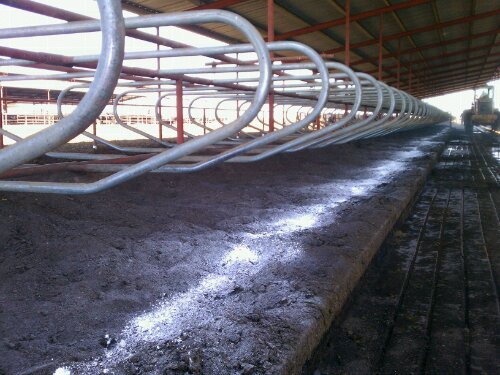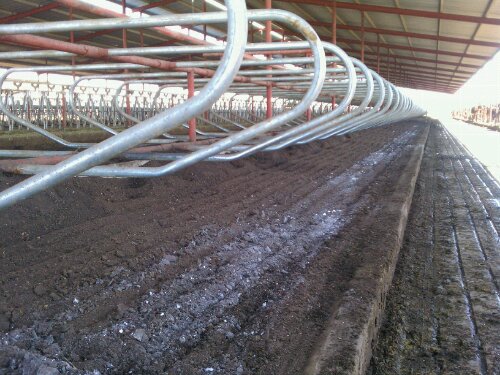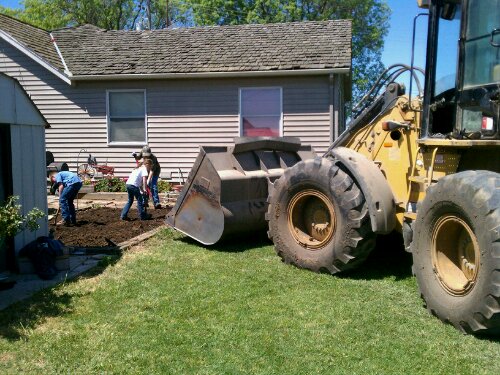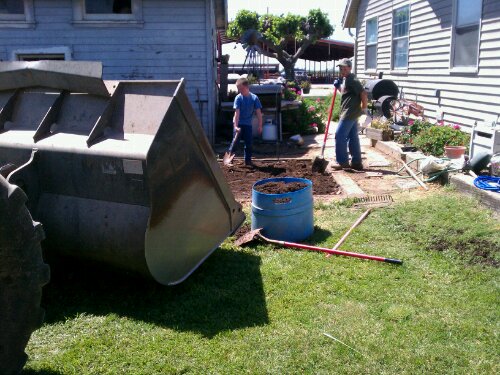Ray-Lin Dairy
farm
National Cheese Lover’s Day
Hey Cheese Lover’s today is your day so vote for up to 3 of your favorite cheeses below. Feel free to add any not here.
Related articles
- celebrating National Cheese Lover’s Day on January 20 (foodtruckadventure.com)
- Artisanal Cheese Honors “National Cheese Day” With a Facebook Comment Contest to Win Affineur Collection!!! (marcellathecheesemonger.com)
- Cheese lovers. (fitfabflawless.wordpress.com)
- Top 4 Cheese Trends to Enjoy on January 20 – National Cheese Lover’s Day! (foodtruckadventure.com)
Cow Bling!

New calves showing off their bling!
On our farm we use eartags to give each animal an unique identifier that allows us to keep important health records for each animal. Here are a few pictures that show the tags up close.

This is used to apply the tags similar to how ears are pierced for earrings
The tags are applied in a similar fashion to earrings through a soft portion of the ear. Each tag is self contained and is clean and sterile.

Each tag has 2 parts this is the male part

Cow bling has a lot of information about the animal
The information of the tags includes our farm brand (starting at the very top of the biggest tag), next is the unique “840” number assigned to only this animal in the United States, followed by the unique number for our farm, in this case 2129. The small white tag has the same numbers and also id an EID tag that contains an RFID information. We currently do not utilize the RFID tag outside of visual use however are we will be implementing the electronic reading in the future to help with efficiency and to eliminate human error.
Peek a Boo Sun

Beautiful sunrise and one reason we enjoy working with the cows because we can witness natures grandeur first hand.
Awesome sunrise taken from one of our barns.
Would Old MacDonald be a geek today?
Growing up, most of us sang the classic children’s song “Old McDonald had a farm.” Today’s average farmer is a far cry from what is portrayed by Old MacDonald in that timeless nursery rhyme. Today’s farmer still cares for the animals and soil like Old MacDonald however the way farmers go about that care has changed greatly. Today farmers are more likely to have a smartphone here and tablet there than they would have just a few years ago, a laptop in a tractor or a combine there is a reality too.
Farmers like many others can have a lot on our plates and some farmers even run 24/7 farms so we look for every advantage we can to multitask and manage our time better. At the same time, farmers, by nature, are caring people and technology has allowed us to effectively manage our operations while providing more time to spend with our families and to help our communities than before.
Farming, like many other professions, has ups and downs — weather can cause harvesting or planting issues, things break and prices go up and down. However what makes it all worth it is the time spent with our families and communities that brings us all back around. If through various technological advances we can become better fathers, mothers, sons, daughters, brothers, sisters, cousins, neighbors and friends –it truly makes us better humans.
In the end I think Old MacDonald would be just as big of a geek as Steve Jobs because it would allow him to be a better human being while taking care of the farm too.
Maybe we should consider adding a verse like this:
Old McDonald had a Droid, e-i-e-i-o
And on that Droid he had farm tools, e-i-e-i-o
cow info here, crops info there
Here a cow, here a crop, everywhere a tech tool
Old McDonald had a Droid, e-i-e-i-o
Thanks to Janice Person for the help with the lyrics Image is from Duck Duck Moose Design and the webpage for their Old MacDonald AppLazy Summer Morning
Here is a cow picture for Wordless Wednesday.

A few of our cows enjoying the cool morning before a hot summer day here in Central California.
These cows were just moved into this pasture yesterday and are relaxing in the grass. With all the late rains we had here in the Central Valley and now the heat the grass is growing very quickly in the pasture. these cows need to get up and get to work eating it down!
Posted from WordPress for Android
Related articles
- Cows play in sprinklers? Wordless Wednesday (raylindairy.wordpress.com)
Want to see my farm?
My family and our dairy farm are very lucky to be located between San Francisco and Yosemite in the Central Valley of California. Because of this location we are in the flight path to and from San Francisco International Airport AKA SFO. When I have a window seat I try to locate my farm as we fly over. Many times I have had a seatmate on flights thoroughly amazed I can pick my farm out from such a high elevation. If you can pick out Yosemite National Park and Half Dome you too can see our farm just a few minutes later as you head west.
We are very lucky to have awesome views of the Sierra Nevada and Coastal ranges, very often we have a front seat view of Half Dome itself.
So as you fly over my farm please wave and remember we are down here everyday working on the farm caring for the cows who are helping provide healthy food for everyone.
Related articles
- AWE INSPIRING….YOSEMITE NATTIONAL PARK! – Yosemite National Park, CA (travelpod.com)
- Six Days in Yosemite National Park – Yosemite National Park, CA (travelpod.com)
Making the Cow Beds
Here is a look into what goes into providing the cows on our farm clean soft comfortable beds to lie in. The pictures are from start to finish and show how we take solid manure sterilize and dry it, with a process similar to composting, the finished product is essentially soil we then use for bedding. On our farm we use 95% of the solid manure from the cows as bedding as an effort to recycle all we can and leave a minimal environmental footprint.

With use the cows tend to mess up their beds, we keep trying to get them to make their beds but to no avail.

The first thing we do is put down Hydrated Lime to dry out any wet spots, yes cows do occasionally wet the bed.

Next we mix the Lime in with what we call the Freestall Groomer, we use this piece of equipment 3 times a week to re groom the beds.

Here is what the beds look like after being groomed.

The next piece of equipment adds more bedding to the stalls.

This is the finished product a clean soft bed for the cows to lie in.

We use a process similar to composting to dry and sterilize the bedding prior to it's use.
Related articles
- Composted manure is the gardener’s best friend (sfgate.com)
- Hints, Tips and Advice on Using Manure in Your Garden (brighthub.com)
Making Cow Food
A few weeks ago we harvested our winter small grain crop to make it into a fermented cow food called silage. Here are a few pictures of the process.

This is what the crop looks like before harvesting.

This machine is a Windrower it cuts the crop and gathers it into rows to be chopped up by another machine

This machine is a Forage Chopper it picks the rows up and cuts it into approximately inch long pieces then blows it into the truck.

the trucks then back into this machine that packs the pieces of the crop into long plastic tubes.

The crop then ferments inside these airtight tubes and within a few weeks it is cow food.
For more about some of the other things we feed our cows read What Do Cows Eat?
Planting the garden – Farm style!
Just remembered I had this post saved as a draft and never published it, silly me!
Here are some pictures of how we prepped the soil (using a little overkill) for our garden.

We like to go BIG on the farm!
We use our loader to get a scoop of the compost we make from the manure our cows leave behind.

Adding our own compost to the garden.
We mixed the compost into the soil to add vital nutrients that allows our vegetables to grow.


Ready to plant!
The finished product!
Related articles
- What do you do with all that cow poop? (Ray-Lin Dairy)
- Simple Compost Tea (autumnrosecottage.wordpress.com)
- The recipe for a ripe batch of manure tea (sfgate.com)






